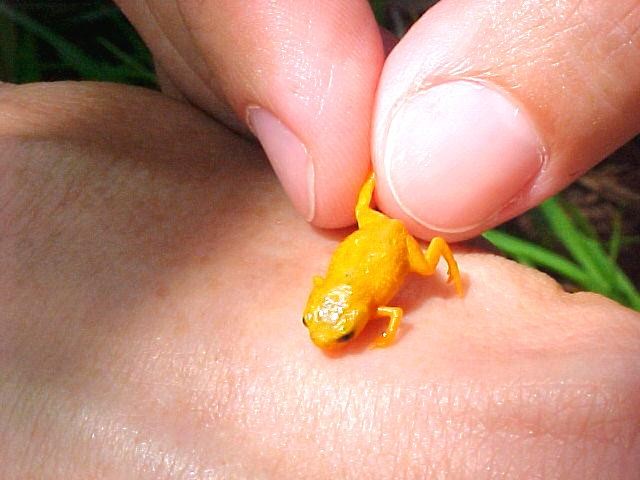Several remarkable, new species of miniature frogs have been found in Brazil's Atlantic forest where each of these amphibians measure just half an inch in length.
These mini frogs are classified under the genus Brachycephalus where biologists first discovered this kind of species during the 19th century. These newly discovered seven species all possess magnificent bright hues which suggest that these animals are poisonous that can ward off predators due to neurotoxins in their skin.
Scientists were in a course of a five year long research of never before seen species of Brachycephalus that are indigenous to the Brazilian Atlantic rainforest which makes these animals the smallest vertebrates that dwell on land.
The Brachycephalus leopardus possesses yellow skin with distinct dark spots that resembles the large cat species where males fertilize female eggs when the female lays them in the water. Another unique kind is the Brachycephalus olivaceus, that has greenish brown skin.
Another kind called the Brachycephalus verrucosus has unique dark orange skin that are covered with lumps of greenish brown spots. The Brachycephalus fuscolineatus has a distinct dark green stripe across its yellow body and the Brachycephalus mariaeterezae also reveals a similar stripe with light blue tones located along its backbone. The Brachycephalus boticario features green hues and an orange spine.
For these tiny amphibians, the cloud forest situated on top of the mountains provides the ideal climate. However, with the onslaught of global warming, these amphibians are susceptible to the harmful and drastic effects of climate change.
Their habitat is also vulnerable to deforestation and human encroachment since each of the species only dwell upon one or two mountaintops found in the region where biologists fear that they are unable to migrate if they lose their homes.
According to Marco Pie from Universidade Federal do Paraná in Brazil, it was a challenge to arrive at different field sites but the anticipation and curiosity drives scientists to search for these types of new species.
The first species of Brachycephalus was discovered in 1842 by naturalist Johann Baptist von Spix however, most of the species were recently described in the last decade since their habitat is truly remote.
This study is published in the journal, PeerJ.



























